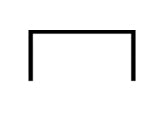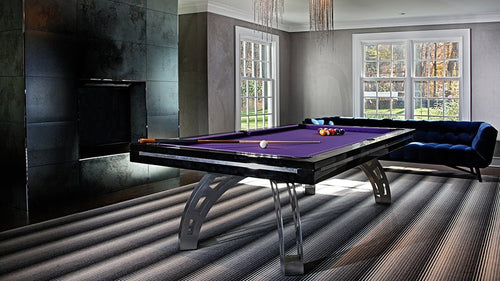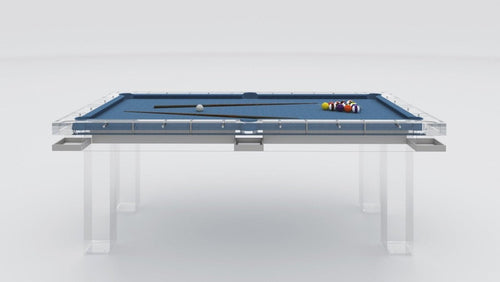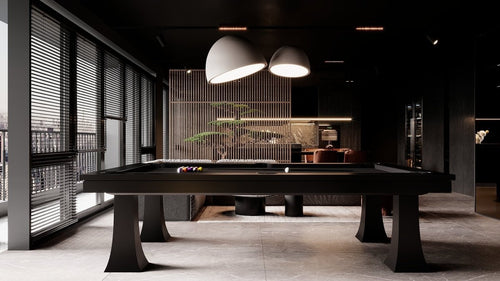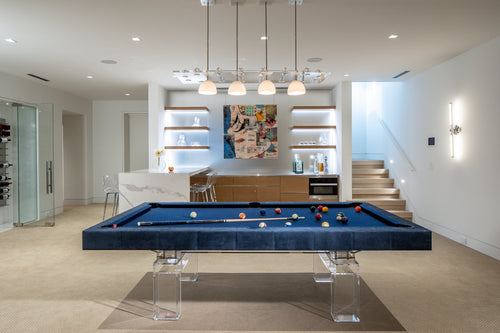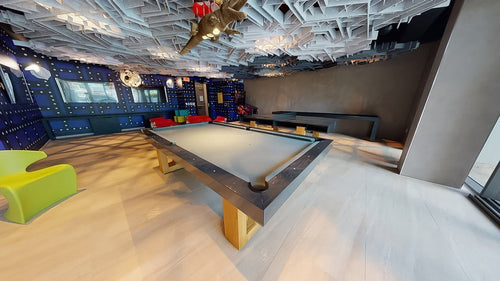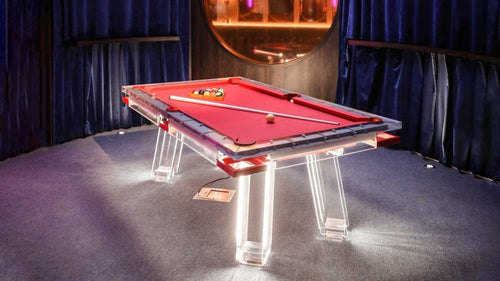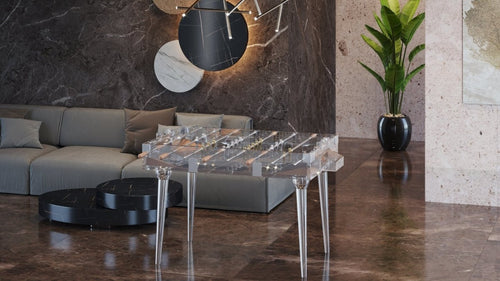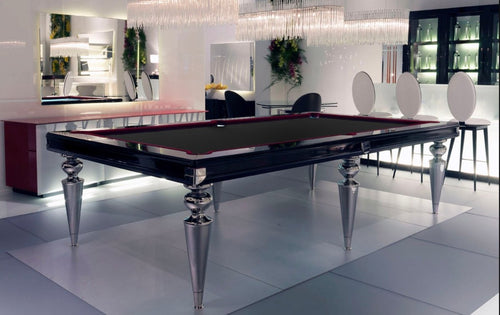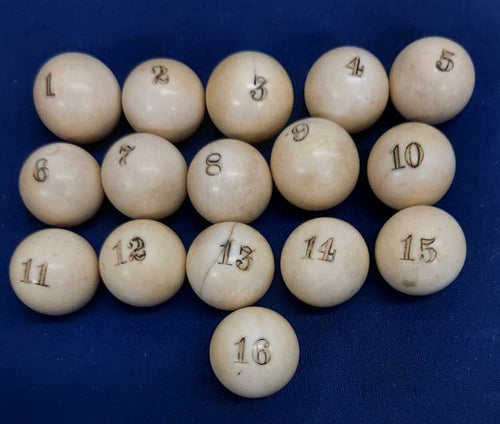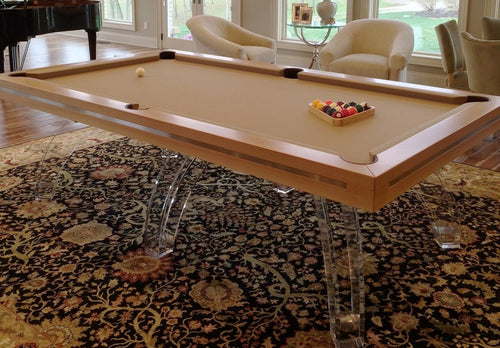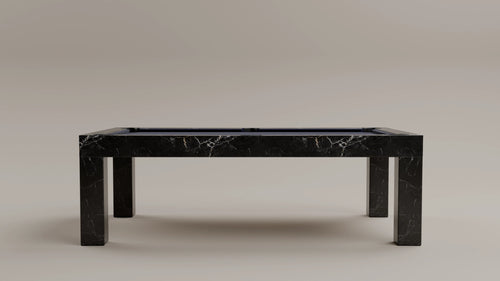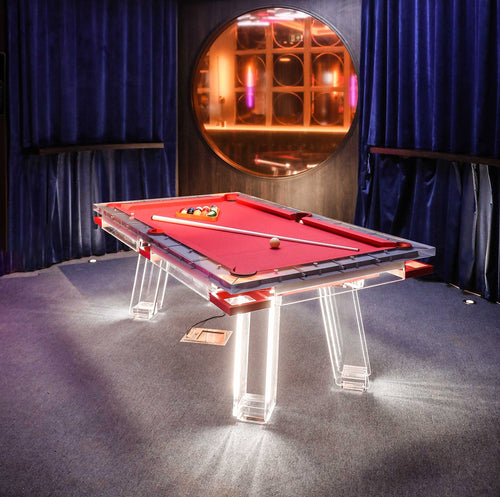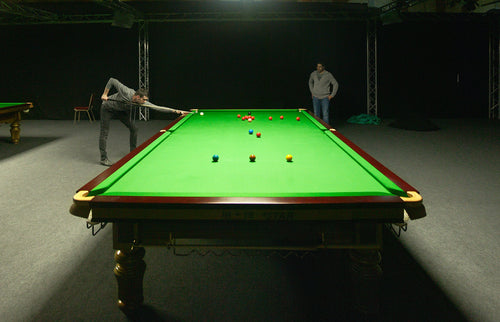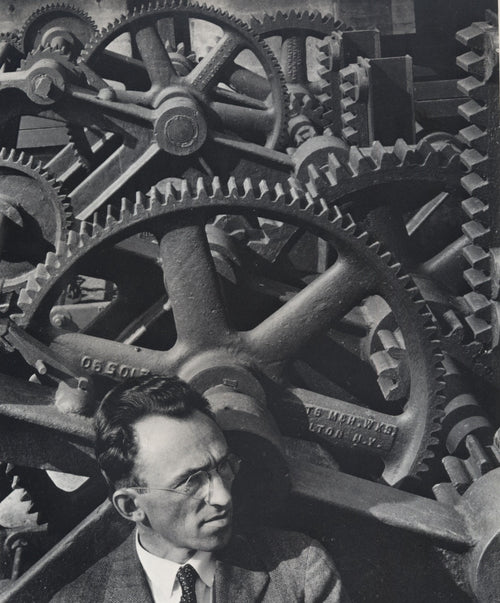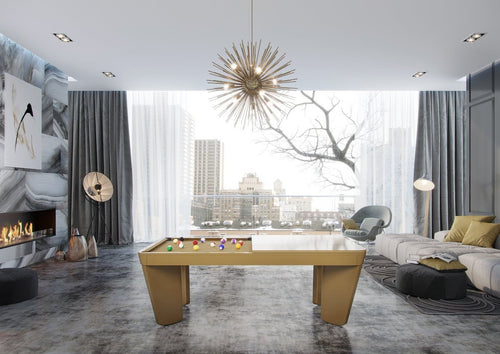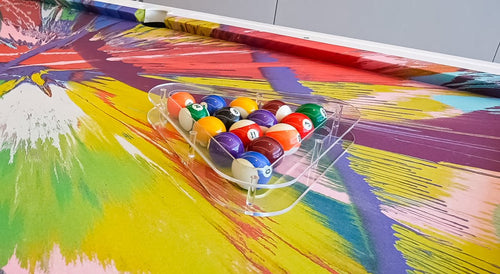Enjoy our modern designs
Estimated Read Time: 7 mins |
Quick take: A lively, accurate rail bounce isn’t luck—it’s engineered. From high‑grade gum‑rubber compounds to nose‑height tolerances measured in millimeters, every detail of a pool table’s cushion determines how faithfully your bank shots obey the “angle-in, angle-out” ideal. Let’s unpack the materials, geometry, and physics that keep rails alive—and explain why a tired cushion or a bad install can sabotage your game.
Why Cushions Matter
In theory, cue-ball rebound should mirror its incoming angle. In practice, banking accuracy depends on three intertwined factors:
- Elastic energy return: high coefficient of restitution (COR) in the rubber.
- Precise geometry: correct cushion profile and nose height.
- Controlled friction: cloth condition + spin interactions.
Any weakness—aged rubber, wrong profile, mis-set nose height—turns “lively rails” into “dead rails,” throwing off every bank and kick.
Material Science: Rubber Compounds & Hardness
Gum Rubber Rules
Top-tier cushions use 85–100 % natural gum rubber, vulcanized for durability and seeded with anti-aging additives. This yields:
- Durometer: ~40–50 Shore A—soft enough for spring, firm enough to avoid mush.
- Rebound efficiency: COR ≈ 0.85–0.90 (70–80 % speed retained).
- Lifespan: multiple years of home play; shorter in busy pool halls.
Fillers & Failures
Budget cushions cut gum content with clay or silica—cheaper, but they harden sooner and play “dead.” Temperature swings matter too: cold stiffens rubber; high heat can soften or even cause reversion unless stabilizers are added.

Cushion Geometry: K-66 vs. K-55 & Friends
Profile Codes Demystified
- K‑66: 1 3/16″ × 1″ section, ~66° angle. The U.S. standard for 2¼″ balls—medium, predictable rebound.
- K‑55: 1 ¼″ × 1 1/8″, ~55° angle—quicker, sharper bounce favored in carom billiards.
- U‑23 / U‑56: Legacy “U” shapes on older or bar‑box tables.
Wrong profile = wrong contact point = wild banks. Always match the cushion to the rail cut your table was built for.
Nose Height: The 64% Rule
The BCA/WPA spec sets the cushion nose at 62½–64½ % of ball diameter (~1.42″ for 2¼″ balls). Too high? Rails play dull and long. Too low? Rails play overly lively and short. Pro builders hit 64% dead-on across every rail.
Rebound Physics in Plain English
Speed & Spin Effects
- Fast shot: rebound a hair shorter (narrower angle).
- Slow shot / follow: rebound longer.
- Draw: shortens the bank.
- Running English: widens angle, extra speed.
- Reverse English: tightens angle, kills speed.
Cloth & Cushion Condition
Fresh slick cloth = longer banks. Dirty or humid cloth = shorter. Very bouncy cushions (hello, Diamond tables) can actually tighten banks because the ball spends less dwell time on the rubber.
Industry Standards & Testing
BCA/WPA tables: K‑66 profile, 63.5 % nose height, rebound test ≈ 70–80 % return distance. Makers like Brunswick machine-bond cushions to maintain those tolerances; tournament crews verify rails with angle tests before events.
Takeaways for Players & Owners
- Diagnosing dead rails: check rubber age and measure nose height—1/8″ off can ruin banks.
- Replacing cushions: buy the correct profile + durometer; insist on precision install.
- Adjusting your game: know that speed, spin, cloth slickness, and even room temperature all tilt bank geometry.
Conclusion
That humble strip of rubber along the rail is a mini engineering miracle. Get the material, hardness, profile, and height right, and every bank obeys predictable physics. Get any detail wrong, and the table turns fickle. Understanding the science lets you maintain your gear—and fine-tune your shots—like a pro.

